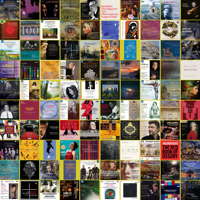- Fartein Valen
- Jean Sibelius
- John Poole
- Joseph Rheinberger
- classical music books
- Machaut
- Leandra Ramm
- Gaudete
All Reeds Blazing
Roger Sayer at the Derby Cathedral organ console
impresses MIKE WHEELER
The idea of Widor as subversive is a new one on me, but I did like Roger Sayer's suggestion, introducing his Derby Cathedral organ recital - Derby, UK, 21 August 2019 - that the Marche Pontificale from his Organ Symphony No 1 is 'slightly pompous and tongue-in-cheek'. Starting out with all reeds blazing, and the occasional suggestion of a sly grin, he created a big sound without lapsing into sonic overload. This was true, too, of the second section - another processional - of Saint-Saëns' Fantaisie No 1 in E flat. The scherzo-like opening saw him hopping deftly between manuals. (I only know that thanks to the CCTV projected onto the screen next to the console.)

Roger Sayer. Photo © 2017 Sim Canetty-Clarke
John Ireland's Elegiac Romance is not as saccharine as the title might suggest. At least, it wasn't on this occasion, with the more active central section's climax verging on the ferocious. Sayer followed it by sending the Toccata from Dubois' 12 Pièces pour Orgue on its merry way, in appealingly clean colours.
We owe the survival of several improvisations by Tournemire to recordings, and some dogged transcription work by Maurice Duruflé. A short way into his Fantaisie-improvisation sur le 'Ave Maris Stella', the Cathedral organ developed a cypher, but Sayer did what any computer-user would do - he simply switched off and switched on again, which did the trick. The re-take quickly got airborne, first in a scherzo section echoing that of the Saint-Saëns' Fantaisie, then in the denser thickets of Tournemire's argument towards the end, to which Sayer was a lucid guide.
Vierne launches his Third Symphony with the grandest of grand gestures, to which Sayer rose with aplomb while also teasing out a certain level of sheer truculence from time to time. He had an engaging way with the rhythmic waywardness of the lyrical second movement's melodic lines, and brought a rather spooky touch to the phantasmagoric Intermezzo that followed. A thoughtful opening to the Adagio touched on moments of anxiety as Sayer steered towards the movement's serious heart. The finale is a typical Vierne toccata, with chromatic passages echoing those of the Intermezzo. Sayer's use of the swell pedal added the occasional frisson of menace, but it all came out fine in the triumphant ending.
Spare a thought, though, for Sayer's assistant, whose contribution to the evening, not just turning pages but hurtling from one side of the console to the other to manipulate stops, was almost as athletic as the organist's own.
Copyright © 30 August 2019
Mike Wheeler,
Derby UK





